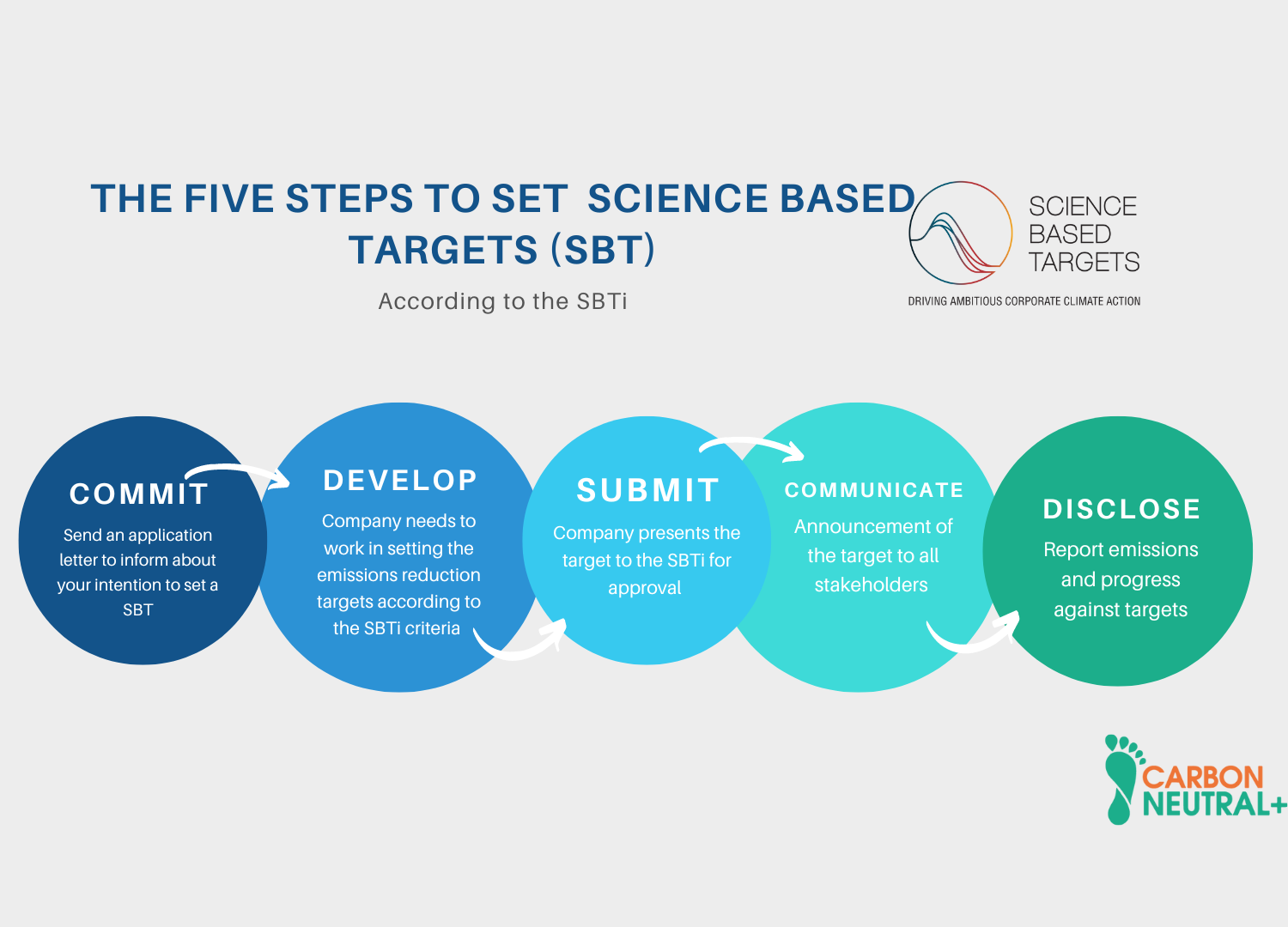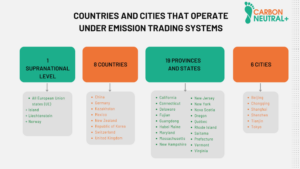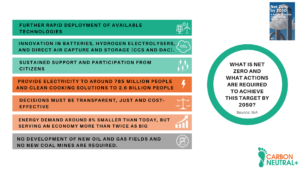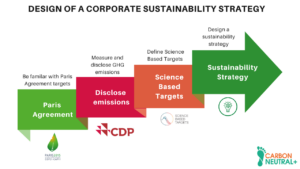
What is carbon capture?
Carbon dioxide (CO2) emissions generated by human activities have led to an accumulation of greenhouse gases in the atmosphere that is causing an increase in

Compliance with international standards by private companies often serves as a mechanism for transparency and communication of their actions.
Depending on the nature of these standards, they may evaluate the management of the company’s processes, employee safety systems, and sustainability policies and targets.
Among the standards that correspond to the environmental assessment of companies, we find the Science Based Targets Initiative (SBTi).
But,
In this article, we will answer all these questions and we give you some examples of companies that currently belong to the Science Based Targets initiative (SBTi).
What are Science-Based Targets?
According to the Science Based Targets Network, these are defined as:
“Measurable, actionable, and time-bound objectives, based on the best available science, that allow actors to align with Earth’s limits and societal sustainability goal”
These objectives come from the Science Based Targets Initiative, based on the following goals:
Who can join SBTi?
All companies, regardless of industry or size, are eligible to participate in the SCT initiative. However, they encourage large companies with the highest GHG emissions to participate in the project.
SBTi does not currently evaluate decarbonization targets of cities, local governments, public sector institutions and non-governmental organizations.
How can organizations set a Science Based Target?
According to SBTi’s proposed guidance, to establish Science Based Targets, companies must go through 5 steps:
Science Based Targets provide companies with a clear path to follow to reduce their emissions. In this way, they seek to align their actions with the goals of the Paris Agreement.
These targets are aligned with a recent call by UN Global Compact for all companies to set their own emissions reduction targets. These should be set to limit the earth’s temperature increase to 1.5°C and thus achieve carbon neutrality by 2050.

Science Based Targets provide companies with a clear path to follow to reduce their emissions. That way, SBTi encourages companies to align their actions with the goals of the Paris Agreement.
These targets are aligned with a recent call by UN Global Compact for all companies to set their own emissions reduction targets. These should be set to limit the earth’s temperature increase to 1.5°C and thus achieve carbon neutrality by 2050.
How do you validate targets as “science-based”?
To determine whether a standard set by a company can be classified as science-based, a SBTi’s team of experts need to approve a submission.
After the company submits its standards, a team of experts will validate against SBTi’s scientific criteria if the targets are “science-based” or not. Once the evaluation is completed, the decision is communicated to the company.
The “science-based” criteria used are available on the web and are freely accessible to any individual who wishes to learn how the SBTi works.
Which organizations are leading the SCBi?
SBTi is a collaborative initiative between different projects:
These organizations seek to lead the way toward a carbon-neutral economy.
They work together to drive the decarbonization of private companies by setting ambitious reduction targets based on the best available science.
SBTi defines and promotes best practices for setting science-based targets. It offers different resources and guidelines, always considering the company’s industry, aligning their targets with strict science-based criteria.
What are the benefits of setting a science-based target?
Companies that set emissions reduction goals based on Science Based Targets will likely:
What organizations are part of the SBTi?
There are currently more than 3,200 companies and financial institutions working with the Science Based Targets initiative to reduce their emissions. They all work in alignment with the latest data from the best available climate science.
Some of these companies are:
To access the complete list of companies that have decarbonization targets aligned with the SBTi, click on this link.
If you are looking to set your reduction targets based on SBT, Carbon Neutral+ can help you
Among the services offered by CARBON NEUTRAL+, two of them that are useful for companies that want to apply to this increasingly important initiative: the carbon footprint measurement performed under the GHG Protocol standards (approved by SBTi), and the operation with renewable energies through BIOREC+. These will allow them to reduce their carbon footprint scope 2 and thus add points and be aligned to multiple reduction targets.
If you want your company to be part of SBTi, contact us and we’ll reply as soon as possible to find the best way to add points and set carbon reduction goals.

Carbon dioxide (CO2) emissions generated by human activities have led to an accumulation of greenhouse gases in the atmosphere that is causing an increase in

According to the Emissions Gap Report 2022, the growth rate of global greenhouse gas (GHG) emissions has declined over the last decade. Between 2010 and

As international agreements related to corporate greenhouse gas emissions (GHG) come into force, the regulations associated with the generation of these emissions increase. This is

Climate change is one of the greatest concerns of our time. This phenomenon is generating consequences that are difficult to reverse, such as an increase

The Paris Agreement is an international agreement adopted on December 12, 2015 during the United Nations Climate Change Conference (COP21) in Paris, France. One of

As the world faces the looming effects of climate change, more and more companies are recognizing the importance of adopting sustainable strategies that aim to
| Cookie | Duration | Description |
|---|---|---|
| cookielawinfo-checkbox-analytics | 11 months | This cookie is set by GDPR Cookie Consent plugin. The cookie is used to store the user consent for the cookies in the category "Analytics". |
| cookielawinfo-checkbox-functional | 11 months | The cookie is set by GDPR cookie consent to record the user consent for the cookies in the category "Functional". |
| cookielawinfo-checkbox-necessary | 11 months | This cookie is set by GDPR Cookie Consent plugin. The cookies is used to store the user consent for the cookies in the category "Necessary". |
| cookielawinfo-checkbox-others | 11 months | This cookie is set by GDPR Cookie Consent plugin. The cookie is used to store the user consent for the cookies in the category "Other. |
| cookielawinfo-checkbox-performance | 11 months | This cookie is set by GDPR Cookie Consent plugin. The cookie is used to store the user consent for the cookies in the category "Performance". |
| viewed_cookie_policy | 11 months | The cookie is set by the GDPR Cookie Consent plugin and is used to store whether or not user has consented to the use of cookies. It does not store any personal data. |